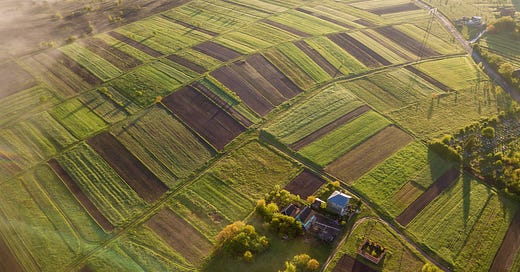Clean Canadian Grain
Pesticide approval and usage regulations aren't working to keep it clean. Fresh thinking and new policies are needed to preserve the grain sector's viability.
De-commodifying bulk grain is not easy, since the infrastructure for production, handling and transportation globally relies on efficiencies, scale, and repeated blending. It’ll be easier to construct new internal grain processing and packaging plants than it will be to clean up and segregate the existing bulk elevator network.
What Do You Mean, ‘Clean Up’?
As the world wakes up to the widespread off-label use of unregistered pesticides on crops in western Canada, it’s possibly too late to reverse the loss in market share as a result of residues being found in foods. Not only do commercial stakeholders continue to turn a blind eye to farmers applying chemicals not in compliance with the approved label instructions, it’s contaminated the bulk grain handling network.
As crops like wheat, barley, oats, dry peas, lentils and chickpeas move from the combine that harvests the crop in the field, through the carts, trucks and augers that transport it to farm storage bins, into the elevators, rail cars, vessels and destination ports, grain shipments are found to have higher and higher residue levels of the popular chemical glyphosate. Even if there is no detectable residue in a truckload of grain delivered to a country elevator, even if it is produced in compliance with certified organic standards, by the time a Prairie grain shipment reaches a buyer in Europe, for example, there’s a risk it will be rejected based on the grain exceeding the maximum residue limit (MRL).
In the global trade in bulk grains, most countries and companies follow CODEX, “a collection of internationally recognized standards, codes of practice, guidelines, and other recommendations published by the Food and Agriculture Organization of the United Nations relating to food, food production, food labeling, and food safety”, according to Wikipedia. Canada’s commodity groups were able to negotiate bilateral trade agreements allowing trade in grain containing higher-than-CODEX levels of various pesticides, as their use on the Prairies has risen, but not in all countries.
Grain companies have found some workarounds, such as only buying from farms that swath the crop rather than spraying it before harvest, writing it into certain purchase contracts, paying a premium for clean grain, and testing samples from farmers bins before calling for delivery. But it’s getting harder, and more expensive.
The last thing the Canadian grain industry can handle right now is rising costs. As it stands, margins have been negative for several years now, taking a few new grain companies out of business.
No Quick Fix
It used to be that handling grain at scale, with efficient logistics and low unit costs, was enough to give a company an edge and a shot at earning profits in the highly competitive commodity business. Now this space is crowded too, and mainly with deep-pocketed players prepared to weather the cycle of negative margins until the good times return, as has played out in grain markets for hundreds of years.
There is a growing, but still tiny number of passionate entrepreneurs sacrificing years without turning a profit to build a grain-based food brand. Food price inflation patterns make it easier today to launch a farm brand in the meat space and be competitive enough to become profitable, and grain is getting closer, thanks to:
Consumer interest in nutrient density and toxicity avoidance;
Growing concerns about community food insecurity;
A critical mass of grain production with attractive ecological attributes;
Technology that enables field-level visibility in packaging;
New money to encourage and reward all of the above.
Understanding Current Risks
It is said that the pain of maintaining the status quo must exceed the pain of making a change, before people will choose different behaviors. Here are some of the pain points in play today pushing Canadian grain farmers to reduce their use of chemicals to grow and market crops.
Grain farmers in Canada already sign affidavits as part of sales contracts that are governed by the Canadian Grain Commission (CGC), stating that they complied with the label instructions on all applied pesticides. In the event of a recall, liability will fall to the farmer seller who falsified the original contract.
Food brands are paying attention and money for change under new programs to provide field level data showing reduced chemical applications. Pressure to reduce Scope 3 emissions will make this a bigger deal for synthetic fertilizer use especially, in the years ahead.
The margin squeeze is real on western Canadian grain-only farms. Commodity prices simply aren’t keeping up with crop input, land and equipment expenses, straining cash flow and draining equity.
Digital Documents
Even though it might feel like it’s been worked on and gone nowhere for years (this author’s experience), we’re close to digitizing the grain supply chain and drastically reducing the cost of field-level transparency. Connecting farm equipment logs into grain inventory management software, and showing it to potential buyers, will be the final stage in segmenting demand for grain in the country.
The truth is, not all grain is created equal, not even close. When you open a bag of fresh-milled, whole-grain, regeneratively-raised wheat flour:
It smells like the crop is being harvested right in your kitchen,
The taste is far superior, and
It’s even digestible for some with gluten allergies.
In the era of building internal capacity and taking care of ourselves, few opportunities for improvement appear as ripe as Canada’s agriculture and food systems. There will be some upsets along the way, to be sure - all in the name of restoring healthy growth, diversification, innovation, and integrity.



